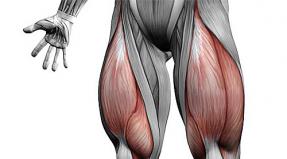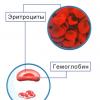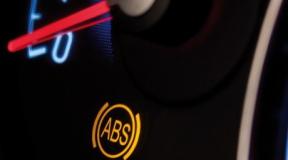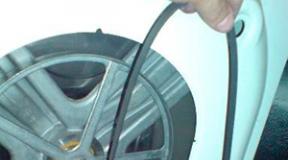Volkswagen Passat B3. door handle problem
Volkswagen Passat B3, B4 general information (Volkswagen Passat 88-96)
This manual is a manual for the maintenance and repair of Volkswagen "Passat" cars with sedan and wagon types, with four-cylinder gasoline and diesel engines release 1988-1996. The manual is intended for employees of service centers and stations and repair shops, as well as for technically trained motorists. Therefore, in some cases, the arrangement of units, mechanisms and systems is described without excessive detail, and the procedure for maintenance and repair can easily become clear when reading the text or studying drawings and illustrations. The manual provides detailed specifications of all units, mechanisms and systems of the car and recommendations are given for the performance of work on maintenance and repair.
Annex I gives the tightening torques for the main threaded connections. Appendix II gives the main parameters and repair dimensions of the six-cylinder V-shaped engine of the AAA model of the Passat 2.8 VR car, as well as the methodology for checking and adjusting the integrated Motronic engine control system and the KE-Jetronic 16-fuel injection system. valve engine model PL cars "Passat 16V". Appendix III describes the design, inspection and repair features of the Passat GT 1.8 G60 Syncro. Appendix IV gives checks of the Motronic 2.9 CMCS of the Passat 1.6 car. The manual reflects the design of cars in the basic version. Therefore, depending on the modification and production of the car, the design of individual components and assemblies, as well as the design and location of some elements of electrical equipment, may differ from those described in the manual.
Scroll blower "G60"
The principle of operation of this volumetric supercharger is based on changing the volume of a rectangular channel twisted into a spiral, going from the periphery to the center. The displacer (piston) is also a spiral, it moves in a plane-parallel circle, running around the spiral of the displacer along the spiral line of the channel, touching the channel wall. Thus, the displacer spiral at the point of contact divides the spiral channel into two volumes:
- before the line of contact between the displacer and the channel, as the line of contact advances, the air is compressed due to a decrease in the cross-sectional area of the channel;
- behind the line of contact between the displacer and the channel, as the line of contact advances, a vacuum is created and air is sucked into the channel. After the displacer's rolling spiral returns to its original position, the cycles of injection in front of the touch line and suction behind the touch line are repeated. The accumulator housing consists of two symmetrical halves, each of which has two spiral channels. One spiral channel is twisted by 360°, and the second by 540°. Between the two fixed channels of each half of the housing there are two movable spiral displacers, which, with their spirals, enter the spiral channels of each half of the housing. The displacer spirals of one half of the housing are separated from the displacer spirals of the other half of the housing by a partition. Each spiral of the displacer is twisted 360° and the spirals of the displacers. separated by a partition, rotated relative to each other by 180°.
To keep the displacers from arbitrary rotation around their axis, a hole is made in the peripheral section of the partition, into which an eccentric with the same eccentricity as the eccentric of the displacer drive shaft enters. Between themselves, the eccentrics are arranged symmetrically and are connected by a toothed belt. The eccentric shafts are parallel to each other. The drive shaft has one eccentric for displacers separated by a partition. The eccentrics rotate in the central holes of the displacers on needle bearings. To eliminate the imbalance of the displacers, two counterweights are placed on the drive shaft. The amount of blown air depends on the speed of the drive shaft, which can reach 10,000 rpm. The pressure ratio at the inlet and outlet of the supercharger depends on the profile of the spirals. The pulsations of the forced air flow are small. The supercharger is a little noisy, the efficiency is 65%.
The address: Moscow city , 1 Nagatinskiy pr-d, 13 (m. Nagatinskaya)
Working hours: daily 9:00-23:00
Professional body repair of any complexity: (straightening of dents, elimination of scratches, complete restoration of body geometry). - Repair of internal combustion engines, chassis; - Painting; - slipway works; - Maintenance; - Comprehensive diagnostics.
Car service "AUTO-SPRINT"
answers: 1 675
Repair of cars of any complexity. Sale of spare parts.
Service Request
The address: Moscow city , Dubininskaya house 63 (m. Paveletskaya)
Working hours: from 10-00 to 19-00
Our Auto Service is located not far from Paveletskaya metro stations. The car service does the following types of work: - installation of sound insulation, - installation of an alarm system of any complexity, - oil change, air and fuel filter replacement, - pad replacement, suspension repair, clutch replacement ...
Superstore car service
replies: 2 276
SuperService
Service Request
The address: Moscow city , Shcherbinka, st. Kosmonavtov house 1, building "B", building 33 (m. Buninskaya alley)
Working hours: 10.00-19.00
For customers of the site Karpis - DISCOUNT in the Superstore car service - 30%. Car Service Superstore performs: - Maintenance, - repair, - body repair cars, - repair of mufflers, - repair and refueling of conditioners. Constantly available spare parts for Chevrolet Aveo, Chevrolet Lanos, Chevrolet...
answers: 10
Car repair on Michurinsky Prospekt
Service Request
The address: Moscow city , Mosfilmovskaya house 54 building 3 (metro Kievskaya)
Working hours: Mon.-Fri. from 9 to 21 Sat-Sun. from 10 to 20
Car service "Autotechcenter on Mosfilmovskaya" offers a full range of services that may be required for your car. We work to solve the problems of your personal transport and help you feel confident on the roads of Moscow. We have professional auto mechanics...
Silencers and catalysts: installation, replacement, repair
Service Request
The address: Moscow city , Yuzhnoportovaya house 15 building 23 (m. Kozhukhovskaya)
Working hours: Daily from 10.00 to 19.00
Co-current-Service is a specialized car exhaust system repair station. A team of professionals will perform work of any complexity on the repair, replacement of mufflers, catalysts, corrugations. Install lambda probe emulator (oxygen sensor snag). Manufacture direct-flow exhaust system. Station...
Repair and service cars and commercial vehicles
Service Request
The address: Moscow city , ALTUFIEVSKOE Sh 31 building 1 (m. Vladykino)
Working hours: 9-21 NO DAYS OFF
Ehvaz-Motors car service offers a wide range of services for the maintenance and repair of imported and Russian cars. We carry out diagnostics of cars, maintenance and repair of any complexity. The Evaz-Motors technical center always has professional service at affordable prices. The range of services...
"I choose Quality!"
Service Request
The address: Moscow city , Berezhkovskaya embankment, house 20, building 88 (m. Kievskaya)
Working hours: We work from 9:00 to 20:00 daily!
For more than four years we have been working in the market of local repair services in Moscow. The totality of the application modern technologies and quality work professionals gives amazing results! - Local repair. - Body repair. - Protective polishing. - Removal of dents without painting. - R...
Proper car repair and maintenance
Service Request
The address: Moscow city , Vostryakovsky proezd possession 8 (m. Prazhskaya)
Working hours: from 10.00 to 20.00
Our car service is engaged in the repair and maintenance of cars of foreign and domestic production. - Special offer for Honda Fit and Honda Jazz owners. - All spare parts are available. Own warehouse of auto parts. "Autokayf" carries out the following scope of work on the current and...
Car service "AutoLub"
Comprehensive car repair
Service Request
The address: Moscow city , Egorevsky proezd house 4 (m. Lyublino)
Working hours: from 9.00 to 21.00, without days off and holidays
Our car service "Avtolyub" has the most modern equipment that allows you to efficiently cope with work of any complexity. - THAT - Auto repair - Auto diagnostics - Auto engine repair - Any auto body repair - The whole range of auto repair works In any case, the AvtoLub technical center owns ...
Prrrropeller!!!
Service Request
The address: Moscow city , Zolotorogozhsky shaft house 4 (m. Ploshchad Ilyicha)
Working hours: 10-00 to 00-00
Since 2004, the Propeller Technical Center has been specializing in repair, tuning and body work for cars of European brands: Mercedes, BMW, Audi, Volkswagen, Porsche. The main services of our technical center: Car maintenance - engine oil change, gearbox oil change, car diagnostics Diag...
Auto service "SPMMotors"
10 years on the market
Service Request
The address: Moscow city , Yaroslavskoe shosse, house 3, building 2 (m. VDNKh)
Working hours: from 9:00 to 21:00 every day.
Auto service "SPMMotors" are specialists who know and love their job, have many years of experience and a creative look. -- Body repair -- Correction of the geometry of the body -- Bumper repair -- Repair of individual parts -- Vehicle painting (from local to full body painting) -- Professional painting...
Locksmith repair and maintenance
Service Request
The address: Moscow city , Kantemirovskaya house 59 A (m. Kolomenskaya)
Working hours: seven days a week from 09:00 to 21:00.
Techcenter Maximum LLC provides maintenance, diagnostics and all types of engine, chassis and electrical parts repair, as well as installation of additional equipment and complex body repairs in accordance with the manufacturer's technology. Repair and service area "...
answers: 51
We remove 97-100% of damage on the body
The address: Moscow city , Bulatnikovskaya st., 2a (m. Prazhskaya)
Working hours: from 9-00
Removal of dents without painting The main activity of the company is paintless repair of dents on the car body using PDR (Paintless Dent Repair) technology. The technology allows 97-100% to remove damage on the car body, without the need to change and/or paint elements.
replies: 2 372
Our specialty is transmission work
Service Request
The address: Moscow city , Ogorodny proezd d4 (metro station Timiryazevskaya)
Working hours: from 10-00 to 21-00
Manual transmission repair. - Repair of manual transmission of any complexity is carried out in Avtorusservice by experienced craftsmen. If you need a quality manual transmission repair, give us a call. We repair transmissions for VW, Skoda, Fiat, Citroen, Opel, Peugeot, Ford, BYD, Chery, Chevrolet, Daewoo, FAW, Geely, Great Wall, Honda, Hyundai, Isuzu, Ki...
AutoService "HodosAuto"
Contract Engines and Contract Boxes. Installation.
Service Request
The address: Moscow city , Paper passage house 19 building 5 (m. Savelovskaya)
Working hours: Mon-Fri 10:00 - 19:00 Sat 11:00-14:00, Sun closed
A specialized repair company for the repair of engines, parts and components of car engines. - Full overhaul engines. - Boring and honing blocks. - Cylinder head repair. - Grinding crankshafts. - Sleeve blocks. - Milling of parting planes. - Endoscopic diagnosis...
Chip tuning and installation of compressors on Honda
Volkswagen Passat can be safely attributed to machines that were of great importance for both the manufacturer and the consumer. Let's start with the first one.
Ask anyone: "Which German car of the last century do you consider the most popular and successful?" I am sure that most of the respondents will remember the Volkswagen Käfer, also known as the Beetle or the Beatle. Indeed, this car has become the most massive product in the history of the automotive industry, having an almost unchanged design for almost 70 years. Success, of course, is undeniable, but every medal has two sides: people expected that each subsequent Volkswagen model should be better than the Beetle. But somehow it didn’t work out, even the revolutionary (according to the creators) Typ 4 line turned out, according to experts, “Vier Türen elf Jahre zu spät” - four doors that were eleven years late.
Motorists waited patiently until 1973 - that's when the Passat B1 (Typ 32) appeared. Despite the fact that this car was built on the same platform as the Audi 80, it was a real breakthrough for Volkswagen in the budget class. Before him, all such cars of the concern had air-cooled engines and rather modest characteristics. The Passat offered more, and by 1981 over two million had been produced. From 1980 to 1988, the Passat B2 was on the assembly line, an even more successful model that was assembled in Brazil until 2006, and the valiant sons of the Middle Kingdom could not refuse to release the B2 under the local name Santana right up to 2013! In 1988, B3 appeared. If the second generation grew out of the first according to the laws of evolution, then the Passat B3 differed radically from previous cars. The design has become more modern, the chassis has changed, but most importantly, injection engines have appeared in a fairly wide range of engines. On a par with them remained both carburetor and diesel, including turbocharged power units.

The car, on the example of which we will consider the cost of ownership of a far from new Passat, was made in 1990. Its mileage is 342 thousand kilometers, and the engine is one of the most reliable: gasoline with an RP index of 1.8 liters, its power is 88 hp. Here we note that 90 forces are indicated in the German catalog, but in the Russian PTS - exactly 88. Be that as it may, we will begin our inspection of the once popular "German" with the motor.

Engine
Bosch single injection is a completely reliable thing. And the motor itself, without any outstanding characteristics, has a very high resource. For the entire run (which, by the way, is quite “honest”), the engine did not ask for expensive repairs or at least a replacement piston rings and other parts subject to increased wear. But he “had been ill” with almost everything that these units most often suffer from. Firstly, this is the passage of a rubber ring between the injection and the intake manifold. Such a common problem is treated by replacing the ring, the cost of which is only 150-200 rubles. Another not the most "survivable" element is the regulator idle move. It’s a little more complicated with it: the original part costs a little less than 10 thousand, but an analogue, if desired, can be purchased for 1.5-2 thousand.
By and large, this is all that usually fails on these motors. The timing belt can force the owner of the Passat to go to the service, which still has to be changed. But even in the service they ask for quite modest today 3,500 rubles for this work. Moreover, the belt itself costs 450 rubles, and the roller costs only 600. What you can save at least something on is changing the oil. It’s better not to fill “synthetics” into this motor, but 10W40 semi-synthetic oil is the best fit. Therefore, we take four liters of oil and a filter, the price of which is from 200 to 300 rubles. It may not be entirely correct, but by definition, a disposable filler plug washer has never been changed here. It doesn’t hurt, it’s good, but it doesn’t flow, and that’s okay. I would like to note that it will be easy for an amateur to smear himself with oil to unscrew both the filter and the plug: everything is in sight, access is free. Even easier to replace the air filter. The cover is held on by latches, but a screwdriver is still useful: the pipe of the air filter housing will not allow you to remove the cover, the clamps should be unscrewed. This is not so long, but the pipe will remain intact. Having closed 200 rubles on an independently performed operation, we look, but is it possible to change also drive belts. At first glance, this may seem easy. Actually - not very much.
1 / 3
2 / 3
3 / 3
There are two belts: one for the generator, the second for the pump and power steering. It would seem that this is it, the tension of the alternator belt. Unscrew the nut on the bracket and move it as you like. But it wasn’t there: in order to remove the alternator belt, you will have to remove the second belt (or the crankshaft pulley), but here you can’t do without a pit or a lift. The cost of the alternator belt ranges from 500 to 1,000 rubles, the power steering belt will cost less - from 200 to 400. If there is no way or desire to crawl under the car in search of bolts that need to be unscrewed to replace the belts, then prepare a thousand and a half for the service station master. Well, let's look at the headlights at the same time: is it convenient to change the bulbs? Let's say right away: the native light here is not the best. On the other hand, for the entire period of operation, the owner of the Passat has not changed a single head light bulb! The car, meanwhile, has been serving him for 18 (!) years. But changing them is easy, especially on the right (in the direction of travel) side. It is not necessary to remove the headlight, it is enough to remove the plugs of the contact group from inside lights. But on the left you have to remove the power steering fluid tank, it completely closes access to the headlight. But this is not difficult: it is fastened with a clamp, a matter of several minutes.

Transmission
Already the first Tradewinds could be bought with both mechanical box gears as well as automatic. We have a five-speed "mechanics", which has not yet broken down and does not seem to be going. But the clutch had to be replaced with a run of about three hundred thousand kilometers. And prematurely: in one of the services they incorrectly determined the cause of jerks when starting off and sentenced the clutch. As it turned out when replacing it, it could serve more than one tens of thousands of kilometers. But if they removed it anyway, they put in a new one, and then they began to deal with the motor, in which then the reason for the jerks lurked. A clutch kit on a B3 costs from five to eight thousand, and for five you can buy parts from good manufacturers. The work will cost 5,500 rubles. All other parts here are from the factory, even CV joints, which is worthy of respect.
Chassis and brakes
Both the rear and front suspensions of the B3 are quite simple and reliable. True, there is one subtle point here: there is a whole army of lovers to raise (yes, not, but raise) the car, especially its front end. For this, racks from B4 are most often installed, although theoretically there should be no sense in this: their height is absolutely the same, only the length of the springs differs. We will not discuss tuning issues, this is all for an amateur. Rather, let's pay attention to this: the front levers for high mileage are so worn out that they have to be changed. The lever costs 1,900 rubles, its replacement is 1,000. If everything is in order with them, then only the ball joint remains of the elements that require attention. It is bolted, it is easy to change it separately from the lever, and the cost of the operation will be only 500 rubles. The price of a ball is about 400 rubles.1 / 2
2 / 2
The rear suspension of the Passat B3 is dependent, most often the shock absorbers need to be replaced. They will cost about 1,000 rubles apiece, but you can find much more expensive: it all depends on imagination, capabilities and ambitions. On our car, replacing a shock absorber will cost one and a half thousand, but if your Passat is dressed in a station wagon, you will have to pay more: some plastic elements will need to be removed during work and then reinstalled, which slightly increases the cost of repairs. The price in this case will be 2,200 rubles for the replacement of one shock absorber. What can you do yourself? Theoretically, almost everything. But we will limit ourselves to replacing the brake pads: this is a fairly simple job. We won’t talk about the front ones, the scheme is classic, replacing disc brake pads is almost a pleasure for any handy man. But replacing the rear drum brake pads has one subtlety.
1 / 2
2 / 2
Somehow it came the need to change the rear pads. The owner went to a car service, and, let's say, inexpensive and with a certain geographical specificity of the working staff. Very soon, the workers called him back: the rear drum could not be removed, it was soured tightly. Tried to beat with a sledgehammer - nothing happened. The situation was saved by the “Bulgarian”: the drum was simply sawn up. You don't have to go to these services! Changing the pads along with the drum is an expensive and completely unnecessary pleasure. Any more or less competent specialist will tell you that the whole point is in the device of the self-breeding mechanism of the pads. Its main detail is a wedge, which falls according to the wear of the pads. It can be felt with a flathead screwdriver through the wheel bolt hole and lifted up. After that, the drum can be removed. By the way, it will also have to be removed to replace, for example, a wheel bearing, so find a normal craftsman who will not climb with a “grinder” where it should not be. Or do it yourself: once will be enough to understand this system. Or - to a normal service, where about 1,200 rubles will be charged for replacing the rear pads.

Body and interior
The interior of the car, of course, cannot be called beautiful, refined, modern or otherwise in a similar vein. It is simple, utilitarian, even boring. The first thing I encountered while driving was the inconvenient location of the ignition switch. It is to the right of the steering wheel, but it hides somewhere between the panel and the steering column, it is not very convenient to crawl up to it. Turnovers float a little: we said that the original idle speed controller is an expensive thing ... Well, okay, but on a trip the car behaves very well, especially at the age of 25.1 / 5
2 / 5
3 / 5
4 / 5
Volkswagen Passat can be safely attributed to the machines that were of great importance for both the manufacturer and the consumer. Let's start with the first one.
Ask anyone: "Which German car of the last century do you consider the most popular and successful?" I am sure that most of the respondents will remember the Volkswagen Käfer, also known as the Beetle or the Beatle. Indeed, this car has become the most massive product in the history of the automotive industry, having an almost unchanged design for almost 70 years. Success, of course, is undeniable, but every medal has two sides: people expected that each subsequent Volkswagen model should be better than the Beetle. But somehow it didn’t work out, even the revolutionary (according to the creators) Typ 4 line turned out, according to experts, “Vier Türen elf Jahre zu spät” - four doors that were eleven years late.
Motorists waited patiently until 1973 - that's when the Passat B1 (Typ 32) appeared. Despite the fact that this car was built on the same platform as the Audi 80, it was a real breakthrough for Volkswagen in the budget class. Before him, all such cars of the concern had air-cooled engines and rather modest characteristics. The Passat offered more, and by 1981 over two million had been produced. From 1980 to 1988, the Passat B2 was on the assembly line, an even more successful model that was assembled in Brazil until 2006, and the valiant sons of the Middle Kingdom could not refuse to release the B2 under the local name Santana right up to 2013! In 1988, B3 appeared. If the second generation grew out of the first according to the laws of evolution, then the Passat B3 differed radically from previous cars. The design has become more modern, the chassis has changed, but most importantly, injection engines have appeared in a fairly wide range of engines. On a par with them remained both carburetor and diesel, including turbocharged power units.

The car, on the example of which we will consider the cost of ownership of a far from new Passat, was made in 1990. Its mileage is 342 thousand kilometers, and the engine is one of the most reliable: gasoline with an RP index of 1.8 liters, its power is 88 hp. Here we note that 90 forces are indicated in the German catalog, but in the Russian PTS - exactly 88. Be that as it may, we will begin our inspection of the once popular "German" with the motor.

Engine
Bosch single injection is a completely reliable thing. And the motor itself, without any outstanding characteristics, has a very high resource. For the entire run (which, by the way, is quite “honest”), the engine did not ask for expensive repairs or at least the replacement of piston rings and other parts subject to increased wear. But he “had been ill” with almost everything that these units most often suffer from. Firstly, this is the passage of a rubber ring between the injection and the intake manifold. Such a common problem is treated by replacing the ring, the cost of which is only 150-200 rubles. Another not the most "tenacious" element is the idle speed regulator. It’s a little more complicated with it: the original part costs a little less than 10 thousand, but an analogue, if desired, can be purchased for 1.5-2 thousand.
By and large, this is all that usually fails on these motors. The timing belt can force the owner of the Passat to go to the service, which still has to be changed. But even in the service they ask for quite modest today 3,500 rubles for this work. Moreover, the belt itself costs 450 rubles, and the roller costs only 600. What you can save at least something on is changing the oil. It’s better not to fill “synthetics” into this motor, but 10W40 semi-synthetic oil is the best fit. Therefore, we take four liters of oil and a filter, the price of which is from 200 to 300 rubles. It may not be entirely correct, but by definition, a disposable filler plug washer has never been changed here. It doesn’t hurt, it’s good, but it doesn’t flow, and that’s okay. I would like to note that it will be easy for an amateur to smear himself with oil to unscrew both the filter and the plug: everything is in sight, access is free. Even easier to replace the air filter. The cover is held on by latches, but a screwdriver is still useful: the pipe of the air filter housing will not allow you to remove the cover, the clamps should be unscrewed. This is not so long, but the pipe will remain intact. Having closed 200 rubles on an independently performed operation, we look to see if it is possible to change the drive belts as well. At first glance, this may seem easy. Actually - not very much.
1 / 3
2 / 3
3 / 3
There are two belts: one for the generator, the second for the pump and power steering. It would seem that this is it, the tension of the alternator belt. Unscrew the nut on the bracket and move it as you like. But it wasn’t there: in order to remove the alternator belt, you will have to remove the second belt (or the crankshaft pulley), but here you can’t do without a pit or a lift. The cost of the alternator belt ranges from 500 to 1,000 rubles, the power steering belt will cost less - from 200 to 400. If there is no way or desire to crawl under the car in search of bolts that need to be unscrewed to replace the belts, then prepare a thousand and a half for the service station master. Well, let's look at the headlights at the same time: is it convenient to change the bulbs? Let's say right away: the native light here is not the best. On the other hand, for the entire period of operation, the owner of the Passat has not changed a single head light bulb! The car, meanwhile, has been serving him for 18 (!) years. But changing them is easy, especially on the right (in the direction of travel) side. It is not necessary to remove the headlight, it is enough to remove the plugs of the contact group from the inside of the headlight. But on the left you have to remove the power steering fluid tank, it completely closes access to the headlight. But this is not difficult: it is fastened with a clamp, a matter of several minutes.

Transmission
Already the first Trade Winds could be bought both with a manual transmission and with an automatic one. We have a five-speed "mechanics", which has not yet broken down and does not seem to be going. But the clutch had to be replaced with a run of about three hundred thousand kilometers. And prematurely: in one of the services they incorrectly determined the cause of jerks when starting off and sentenced the clutch. As it turned out when replacing it, it could serve more than one tens of thousands of kilometers. But if they removed it anyway, they put in a new one, and then they began to deal with the motor, in which then the reason for the jerks lurked. A clutch kit on a B3 costs from five to eight thousand, and for five you can buy parts from good manufacturers. The work will cost 5,500 rubles. All other parts here are from the factory, even CV joints, which is worthy of respect.
Chassis and brakes
Both the rear and front suspensions of the B3 are quite simple and reliable. True, there is one subtle point here: there is a whole army of lovers to raise (yes, not, but raise) the car, especially its front end. For this, racks from B4 are most often installed, although theoretically there should be no sense in this: their height is absolutely the same, only the length of the springs differs. We will not discuss tuning issues, this is all for an amateur. Rather, let's pay attention to this: the front levers for high mileage are so worn out that they have to be changed. The lever costs 1,900 rubles, its replacement is 1,000. If everything is in order with them, then only the ball joint remains of the elements that require attention. It is bolted, it is easy to change it separately from the lever, and the cost of the operation will be only 500 rubles. The price of a ball is about 400 rubles.1 / 2
2 / 2
The rear suspension of the Passat B3 is dependent, most often the shock absorbers need to be replaced. They will cost about 1,000 rubles apiece, but you can find much more expensive: it all depends on imagination, capabilities and ambitions. On our car, replacing a shock absorber will cost one and a half thousand, but if your Passat is dressed in a station wagon, you will have to pay more: some plastic elements will need to be removed during work and then reinstalled, which slightly increases the cost of repairs. The price in this case will be 2,200 rubles for the replacement of one shock absorber. What can you do yourself? Theoretically, almost everything. But we will limit ourselves to replacing the brake pads: this is a fairly simple job. We won’t talk about the front ones, the scheme is classic, replacing disc brake pads is almost a pleasure for any handy man. But replacing the rear drum brake pads has one subtlety.
1 / 2
2 / 2
Somehow it came the need to change the rear pads. The owner went to a car service, and, let's say, inexpensive and with a certain geographical specificity of the working staff. Very soon, the workers called him back: the rear drum could not be removed, it was soured tightly. Tried to beat with a sledgehammer - nothing happened. The situation was saved by the “Bulgarian”: the drum was simply sawn up. You don't have to go to these services! Changing the pads along with the drum is an expensive and completely unnecessary pleasure. Any more or less competent specialist will tell you that the whole point is in the device of the self-breeding mechanism of the pads. Its main detail is a wedge, which falls according to the wear of the pads. It can be felt with a flathead screwdriver through the wheel bolt hole and lifted up. After that, the drum can be removed. By the way, it will also have to be removed to replace, for example, a wheel bearing, so find a normal craftsman who will not climb with a “grinder” where it should not be. Or do it yourself: once will be enough to understand this system. Or - to a normal service, where about 1,200 rubles will be charged for replacing the rear pads.

Body and interior
The interior of the car, of course, cannot be called beautiful, refined, modern or otherwise in a similar vein. It is simple, utilitarian, even boring. The first thing I encountered while driving was the inconvenient location of the ignition switch. It is to the right of the steering wheel, but it hides somewhere between the panel and the steering column, it is not very convenient to crawl up to it. Turnovers float a little: we said that the original idle speed controller is an expensive thing ... Well, okay, but on a trip the car behaves very well, especially at the age of 25.1 / 5
2 / 5
3 / 5
4 / 5
Every car model has “sore” places. This candidate is no exception. There are many sores, but when the owner cannot get into the interior of the car, the problem comes to the fore.
When operating a used car, like the Volkswagen Passat B3, you have to deal with breakdowns that occur due to the age of the car. In addition, a worthy replacement - an original part - can be difficult to find. Spare parts available on the market are often far from ideal. Passat B3 door handles are just that case.
Breaking
But now not about the mechanisms of the handles themselves. It's about additional elements.
Often, failure occurs as a result of improper installation. This leads to incorrect work of parts and the next trip to the store.
Replacing a failed handle is a simple matter, but successful and long-term use is not guaranteed unless a sealing insert is installed.
Factory retainer
It is inserted into the perimeter mounting hole and is a plastic U-shaped element.

In machines of this model that are in operation, such liners are only in every third.
At the time of replacing the handle, the gasket slips off and falls into the inner cavity of the door. The owner does not notice this, puts the spare part and is surprised that the handle dangles in the landing opening, there is a gap between it and the "shirt" of the door.

And most importantly, there is a problem in adjusting and opening. The person tries to pull harder or pulls and breaks the base of the handle.
You can find the lost seal by removing the door trim. People consider it a clip of unknown purpose and throw it away.
These elements are not included in the scope of delivery of door handles. Accordingly, many car owners who repair cars on their own are not aware of their existence.
The bad thing is that it is difficult to buy them separately. You have to look for analysis or include fantasy.
How to get out of the situation?
In the role of a temporary substitute, a sealant cut from a can is quite suitable. But there is one subtlety in the manufacture.
 Homemade liner retainer
Homemade liner retainer The U-shape is respected, but the metal from the middle part does not need to be completely cut out. It is better to bend some of it to the horizontal crossbar of the homemade letter P.
The same applies to the legs of the manufactured element. These bends will become springy anchor points, allowing the handle key to work smoothly, transferring part of the load to the door “shirt” at the moment of opening.
 Operating position of the insert (view with the door trim removed)
Operating position of the insert (view with the door trim removed) It makes no sense to create an exact copy of the sealing insert. It is only necessary to reproduce the functional features of the part. And in the future, replace the homemade with the original.
Such tricks are permissible in the elimination of many age-related breakdowns and on different cars.
With regard to the door handles of the Volkswagen Passat B3, such a step is justified. It is better to have functioning locks than to reach through the cabin every time to let the passenger in.
There is an original insert in the castle or a home-made piece of iron - there is no difference. No one knows about it except the owner. And no one cares about this if the doors swing open with a simple movement of the hand.



















